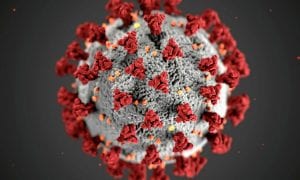WESTFIELD PUBLIC HEALTH WEEKLY BULLETIN

JUANITA CARNES,
Chair, Westfield Board of Health
By Juanita Carnes FNP, Board of Health chair
Welcome November, which brings colder temperatures, Veterans Day, Thanksgiving and Christmas shopping. It also brings many viruses including the persistent COVID-19. This week brings the CDC approval of the Pfizer vaccine for 5- to 11-year-olds and many having already received their first dose. Today, I received pictures of my great-niece and -nephew in Ohio happily displaying their vaccine site covered in a Band-Aid and proudly holding their vaccine card. President Biden said the administration has acquired enough vaccines for every child in America.
Our numbers this week reflect a decrease in cases in Westfield, but no guarantee that it will continue to trend down. With our vaccine rate of 54 percent, its more likely to rise again rather than continually decrease. Of the 56 cases this week, the unvaccinated dominate. Nationally, 70 percent of adults are vaccinated. Globally, the number of deaths has reached over 5 million.
Last year influenza (the flu) was essentially non-existent. With people gathering far more this year, we expect to see the flu again. I have seen several cases in my patients already. COVID-19 and the flu are both very contagious respiratory viruses. COVID-19 is caused by a coronavirus and the flu is caused by influenza viruses. Sorry to say, but you can actually get both at the same time.
COVID-19 spreads more easily and over a longer time period can cause more serious illness, and takes longer to show symptoms than the flu. There is an approved test that detects seasonal flu A and B and SARS-CoV-2. Both can infect people with varying degrees, from no symptoms to severe. Symptoms of both include fever, feeling feverish, chills, cough, shortness of breath, difficulty breathing, fatigue, sore throat, nasal congestion, muscle aches, body aches, headache, nausea, vomiting, diarrhea, loss of taste and smell (more frequent in COVID-19). With the flu, symptoms start one to four days after being infected. The flu usually comes on suddenly. With COVID-19, symptoms start five days after being infected but can be two to 14 days after.
Infected individuals of both can spread germs one day before experiencing any symptoms. With COVID-19, you are more contagious for a longer period of time than the flu. Flu patients are most contagious the first three to four days of illness and up to seven days. COVID-19 patients are thought to be contagious for two days before and 10 days after experiencing symptoms, but this is still under investigation. People who are hospitalized with severe disease and immunosuppressed patients can be contagious for 20 days and more.
Both viruses are spread person to person within six feet of each other. Particles are expelled from coughing, sneezing and talking. Those particles travel to others’ mouths and noses and are inhaled. To a lesser degree, those particles can be transferred via touching, hand shaking, touching surfaces and objects and then touching one’s nose, mouth and eyes. COVID-19 can be spread before symptomatic, by someone with just mild symptoms and by those who never experience symptoms. COVID-19 is more quickly and easily spread.
Older adults, those with underlying medical conditions and pregnant women are at highest risk for severe illness and complications of both viruses. COVID-19 causes more serious illness, more hospitalizations, more post infection complications and more death. Complications of both include pneumonia, respiratory failure, acute respiratory distress syndrome, sepsis, cardiac injury, worsening or chronic conditions, inflammation of lungs, heart, brain, muscles and secondary infections (bacterial, fungal).
With the flu, one usually recovers in two weeks or under without major complications. Some do experience complications of the flu, but much less than with COVID-19. Complications of COVID-19 also include blood clots of veins and arteries (of lungs, heart, legs and brain), multi-inflammatory syndrome and “long COVID.”
Treatment for both consist of supportive medical care for high risk and hospitalized patients. There are FDA-approved antiviral drugs for influenza. COVID-19 has one approved drug and some investigative treatments. Vaccines for both are approved or authorized and can be given at the same time. Both are strongly advised to reduce hospitalization and death.
Given our dismal vaccine rate in this city, get your children vaccinated now that it is approved. They need protection. Even if they have had COVID-19 they will benefit from the vaccine. Get them vaccinated for the flu also. Get yourself and someone else vaccinated. Get your booster shot. Continue to wear masks, use hand sanitizer, social distance and avoid large indoor gatherings. Spread accurate information not the virus. Let’s welcome November with an increase in our vaccine rate, lower case numbers and no more deaths in Westfield.
Take care of yourself and someone else.
Dedicated health department members have been working tirelessly throughout the pandemic, as well as Board of Health members Juanita Carnes, FNP, Margaret Doody, and Stan Strzempko, M.D.
We keep working to keep you safe.






